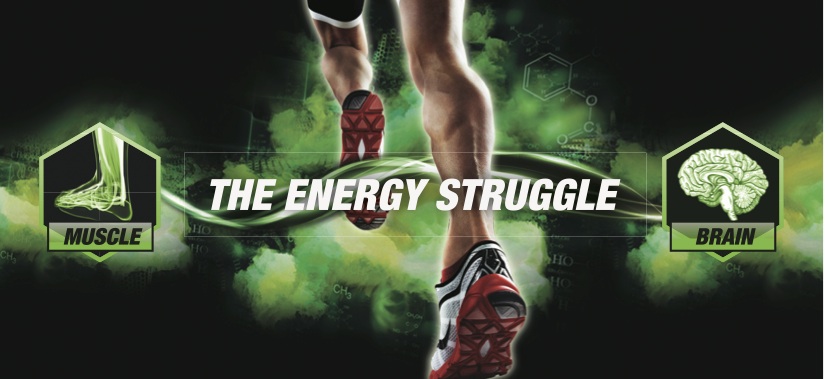Guest Post by The Sport Geeks – Dr. Scott Black, MD and Dr. Shawn Stasko, PhD
As competitors, we’re always looking for the next great supplement that will make us stronger, faster, or able to perform at our best for longer periods of time. Other than following a well-designed training program, the simple truth is that there are very few things that will make us perform better. One of those extras that have been proven to be an effective performance enhancer is carbohydrate, and lucky for us, it’s readily available and safe for any level of competition. Evidence to support the use of carbohydrate during physical activity has been well documented with numerous scientific studies dating even back as early as the 1920’s.
Why would eating or drinking carbohydrate during physical activity make us perform better? The short answer is fuel. Many of us may already be aware that our muscles use a lot of carbohydrate to fuel our strenuous activity. What might not be as well-known is that carbohydrate is also our brain’s preferred source of energy. Carbohydrate is stored in the muscles so that it is close-by and ready to use for fuel. However, once it is squirreled away in the muscles, carbohydrate is no longer available to be used directly as a source of energy for the brain. Instead, our brains depend on sugar provided by the liver to keep us alert and feeling sharp as we sprint to the finish at the end of a race. Anyone who has “bonked” at the end of a marathon can attest to the effects of low blood sugar.
Two things complicate this picture: 1) The liver has a limited ability to store carbohydrate; and 2) Exercising muscle is also very interested in using that same carbohydrate provided by the liver. In other words, our brain and muscles compete for the limited supply of carbohydrate produced by our liver during exercise – The Energy Struggle. If and when those fuel supplies start running low, something has to give, and in this physiologic ‘tug-of-war’, the brain is always the victor. That’s why during exercise when our blood sugar begins to drop, we feel sluggish and irritable because our brains are not getting enough fuel. The brain’s natural response to this is to tell your muscles to decrease their work output (or in other words, slow down) in order to conserve fuel. Does that sound like something you have experienced around mile 20 in a marathon?
So how can we prevent running out of gas late in a race and keep this ‘tug-of-war’ between the brain and muscles at bay? Simple – take in fuel during the race. Regularly consuming carbohydrate, either by eating or drinking during an event, will improve your performance. There are limitations to this, however. More carbohydrate intake is not necessarily better. Our gastro-intestinal (GI) system has a limited ability to absorb carbohydrate and the normal physiologic range falls in between 60-75 grams per hour during exercise. As we exercise, blood flow is greatly decreased to the stomach and small intestines, maximizing flow to your brain and muscles but minimizing digestion and absorption. Therefore, each of us must find the carbohydrate amount that works best for our personal physiology. Experimenting with various sources of carbohydrate from food and liquid within the normal physiologic range is a good place to start and then fine tune on longer training days for maximum results.
Ingesting carbohydrate during exercise has been proven to lead to greater performance, but not all carbohydrate is the same, and exercise greatly reduces our ability to digest and absorb this precious fuel source. Luckily to aid in this sluggish process, Mother Nature has equipped our intestines with different pathways to get different kinds of carbohydrate into our bloodstream. We can take advantage of this fact to increase our carbohydrate intake while at the same time decreasing our GI side effects. In order to accomplish this, it is important that we consume a combination of carbohydrates during exercise rather than relying on a single carbohydrate source. Look for products that contain simple (like fructose) as well as complex carbohydrate sources (like maltodextrin). Be wary of taking in too much single source carbohydrate during exercise, as this can lead to all kinds of unwanted side effects (nausea, bloating, intestinal gas, diarrhea).
So what is the bottom line with regard to carbohydrate intake during exercise? Consider the following tips when deciding how to take in carbs and calm the internal energy struggle.
- Learn the right amount of carbohydrate for you. Studies have shown that about 60 – 75 grams per hour seems to be a good first guess. Some of us can process more, others less. Figure out your ability to take in carbohydrate during your long training days. Experiment with different amounts of carbohydrate within the limits of our physiology, and find your personal sweet spot. This is not something you want to wait until race day to learn.
- Look for products that contain a carbohydrate blend of simple and complex rather than larger amounts of a single carbohydrate source. These products take advantage of the multiple carbohydrate pathways to get sugar out of your intestines and into your blood.
- Finally, practice eating and drinking during exercise. Training your GI system to process food and drink while you’re hard at work will pay great dividends on race day.
The Sport Geeks hope you find these suggestions helpful and are confident they will help you perform better. Please feel free to contact us with any questions or comments at @thesportgeeks@gmail.com or leave us a comment in the blog below.

